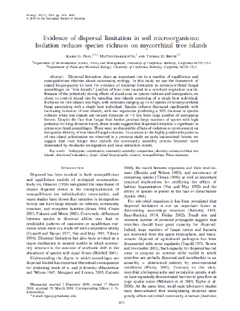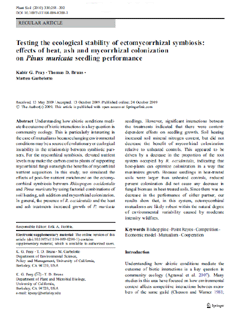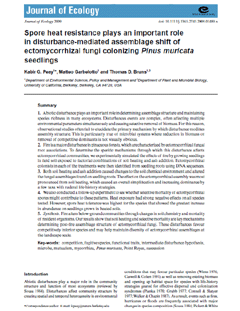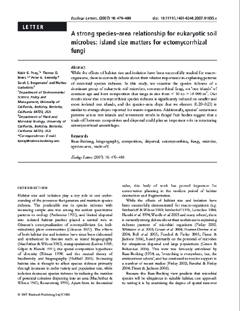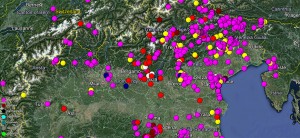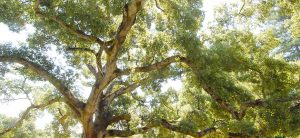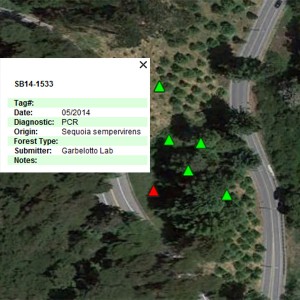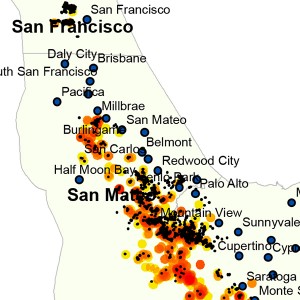Island Biogeography and Fire – Kabir Peay
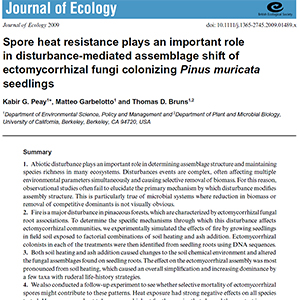
Island Biogeography and Fire Affecting Ectomycorrhizal Colonization of “Tree Islands”
Fungi are a critical component of the diversity and function of terrestrial ecosystems. Pathogens and mycorrhizal fungi receive a large, direct share of net primary productivity, and wood decay and mycorrhizal fungi play a critical role in the cycling of key plant macronutrients. However, the biodiversity and community dynamics of these organisms are still poorly resolved, as is the extent to which they control plant and animal community structure. For my thesis work I used molecular, GIS, and isotopic techniques to examine a number of topics related to the community assembly and symbiotic dynamics of ectomycorrhizal fungi.
The first part of my thesis applied the theory of island biogeography to ectomycorrhizal “tree-islands” patches of host trees embedded in a non-host matrix as a way to look for evidence that immigration and extinction affect ectomycorrhizal assemblages. These tree-islands generally conformed to the expectations of island biogeography theory larger tree islands housed more species of ectomycorrhizal fungi, and more isolated tree islands had fewer species of ectomycorrhizal fungi. This work led to one of the few published species-area relationships for fungi and provided good evidence for a competition-colonization tradeoff in ectomycorrhizal communities. The second portion of my thesis work used manipulative experiments to assess the effects of fire on ectomycorrhizal assemblage structure and host plant relations. We found that simulated fire simplified and shifted the ectomycorrhizal assemblage colonizing seedlings. We also found that the species with the greatest increase in abundance from simulated fire also had the most heat tolerant spores, indicating that this may be an important mechanism for changes in post-fire assemblage structure. We also found evidence that the ectomycorrhizal plant-fungal symbiosis remained mutualistic despite dramatic changes in the soil environment after simulated fire.
From this work we have found evidence for the importance of both stochastic ecological processes, such as immigration, as well as deterministic ecological processes, such as niche partitioning. Because most assemblages are likely affected by both sets of processes, I believe a key challenge in moving fungal community ecology forward is to synthesize results from both types of studies and determine the spatial and temporal scales at which they are most important in determining species’ abundance and distribution.

